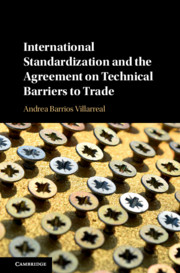Book contents
- International Standardization and the Agreement on Technical Barriers to Trade
- International Standardization and the Agreement on Technical Barriers to Trade
- Copyright page
- Dedication
- Contents
- Tables
- Abbreviations and Acronyms
- Introduction
- I The International Standardization System
- II International Standards as Part of International Law
- III Standards from the Economic Perspective
- IV International Standardization under the WTO
- V Practical Application of the Concept of an International Standardizing Body
- VI Practical Application of the Concept of International Standard
- General Conclusions
- Select Bibliography
- Index
I - The International Standardization System
Published online by Cambridge University Press: 21 September 2018
- International Standardization and the Agreement on Technical Barriers to Trade
- International Standardization and the Agreement on Technical Barriers to Trade
- Copyright page
- Dedication
- Contents
- Tables
- Abbreviations and Acronyms
- Introduction
- I The International Standardization System
- II International Standards as Part of International Law
- III Standards from the Economic Perspective
- IV International Standardization under the WTO
- V Practical Application of the Concept of an International Standardizing Body
- VI Practical Application of the Concept of International Standard
- General Conclusions
- Select Bibliography
- Index
Summary
- Type
- Chapter
- Information
- Publisher: Cambridge University PressPrint publication year: 2018



